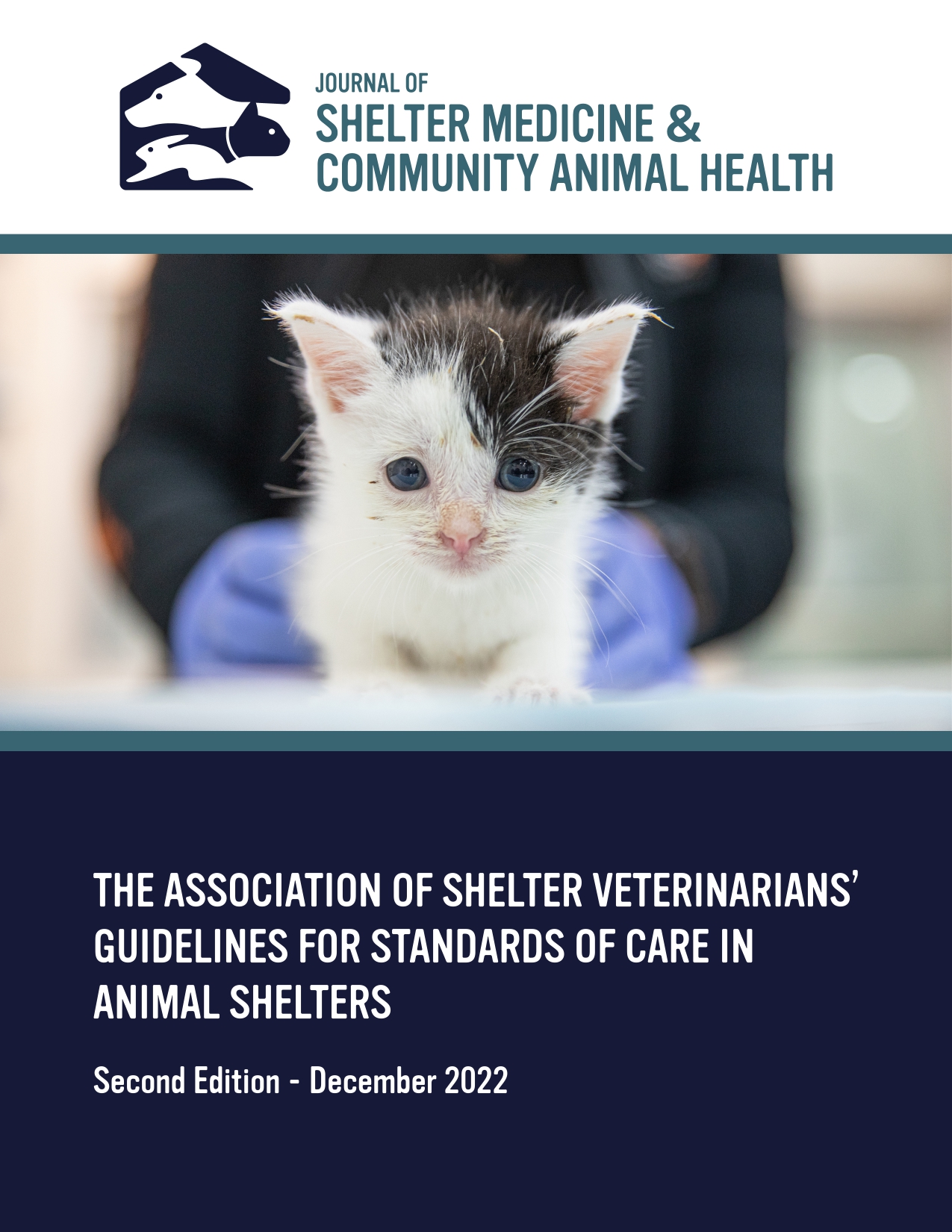Anesthetic and Analgesic Protocols in Spay-Neuter Clinics: A 2017 Survey of Practices and Preferences in the United States
DOI:
https://doi.org/10.56771/jsmcah.v3.105Keywords:
HQHVSN, analgesic protocols, multimodal analgesia, spay-neuter anesthesiaAbstract
Introduction: The advancement of spay-neuter procedures has been vital to the reduction of euthanized dogs and cats. Even though many spay-neuter clinics and shelters have adopted anesthesia protocols that align with best practices, there is currently little published data reporting trends among these clinics in the United States. The aim of this study was to provide data on the most commonly used high-quality, high-volume spay-neuter (HQHVSN) anesthetic/analgesic protocols.
Methods: In 2017, a voluntary, anonymous web-based survey was distributed to shelters/clinics through the HQHVSN veterinarians’ listserv and the Association of Shelter Veterinarians (ASV) listserv.
Results: One hundred and six facilities participated in the survey spanning 36 states in the United States. The most commonly used canine anesthesia premedication was acepromazine paired with an opioid, with acepromazine/hydromorphone and acepromazine/butorphanol representing 26% (24/91) and 23% (23/91) of the responses, respectively. Ketamine/midazolam was the most commonly used canine induction anesthetic representing 39% (35/91) of the responses. The most commonly used feline protocol was a total intramuscular anesthetic combination such as dexmedetomidine/ketamine/butorphanol (DKT) or Telazol/butorphanol/dexmedetomidine (TTDex) accounting for 39% (35/91) and 33% (30/91) of the responses, respectively. The majority of respondents administered an injectable nonsteroidal anti-inflammatory drug (NSAID) to their canine and feline patients at 63% (67/106) and 59% (63/106)), respectively. Only 26% (25/98) of respondents used to-go-home (TGH) medications, and only 40% (41/102) of respondents used local anesthetics. Overall protocol satisfaction was 86% (59/66).
Conclusion: This survey identified that across a wide range of spay-neuter clinics, there exists significant trends with regard to anesthetic and analgesic protocols. These results can be used as primary, historical data to which future studies can compare.
Downloads
References
Rowan A, Kartal T. Dog Population & Dog Sheltering Trends in the United States of America. Animals (Basel). 2018;8(5):68. doi: 10.3390/ani8050068
Association of Shelter Veterinarians’ Veterinary Task Force to Advance Spay-Neuter, Griffin B, Bushby PA, et al. The Association of Shelter Veterinarians’ 2016 Veterinary Medical Care Guidelines for Spay-Neuter Programs. J Am Vet Med Assoc. 2016;249(2):165–188. doi: 10.2460/javma.249.2.165
Bushby PA. High-Quality, High-Volume Spay-Neuter: Access to Care and the Challenge to Private Practitioners. J Feline Med Surg. 2020;22(3):208–215. doi: 10.1177/1098612X20903600
Intake and Outcome Data Analysis, Full Year 2023. Shelter Animals Count; 2024. Accessed Jul 31, 2024. https://www.shelteranimalscount.org/wp-content/uploads/2024/01/Full-Year-2023-Report.pdf
Shivley JM, Brookshire WC, Bushby PA, Woodruff KA. Clinically Prepared Veterinary Students: Enhancing Veterinary Student Hands-on Experiences and Supporting Hospital Caseload Using Shelter Medicine Program. Front Vet Sci. 2018;5:95. doi: 10.3389/fvets.2018.00095
Hedge ZN, Bossong F, Gordon-Ross PN, Kovacs SJ. Exploring the Effects of Participation in a Shelter Medicine Externship on Student Knowledge and Self-Confidence. J Vet Med Educ. 2019;46(1):4–13. doi: 10.3138/jvme.0417-056r
Powell L, Reinhard CL, Serpell J, Watson B. A Survey of Veterinary Student and Veterinarian Perceptions of Shelter Medicine Employment. J Vet Med Educ. 2023;50(1):27–52. doi: 10.3138/jvme-2021-0112
Foley JE. The Educational Discipline of Shelter Medicine. J Vet Med Educ. 2003;30(4):379–382. doi: 10.3138/jvme.30.4.379
Cistola AM, Golder FJ, Centonze LA, McKay LW, Levy JK. Anesthetic and Physiologic Effects of Tiletamine, Zolazepam, Ketamine, and Xylazine Combination (TKX) in Feral Cats Undergoing Surgical Sterilization. J Feline Med Surg. 2004;6(5):297–303. doi: 10.1016/j.jfms.2003.11.004
Williams LS, Levy JK, Robertson SA, Cistola AM, Centonze LA. Use of the Anesthetic Combination of Tiletamine, Zolazepam, Ketamine, and Xylazine for Neutering Feral Cats. J Am Vet Med Assoc. 2002;220(10):1491–1495. doi: 10.2460/javma.2002.220.1491
Ko JC, Berman AG. Anesthesia in Shelter Medicine. Top Companion Anim Med. 2010;25(2):92–97. doi: 10.1053/j.tcam.2010.03.001
Grubb T, Sager J, Gaynor JS, et al. 2020 AAHA Anesthesia and Monitoring Guidelines for Dogs and Cats. J Am Anim Hosp Assoc. 2020;56(2):59–82. doi: 10.5326/JAAHA-MS-7055
Levy JK, Bard KM, Tucker SJ, Diskant PD, Dingman PA. Perioperative Mortality in Cats and Dogs Undergoing Spay or Castration at a High-Volume Clinic. Vet J. 2017;224:11–15. doi: 10.1016/j.tvjl.2017.05.013
Sylvestre FR, Monteiro BP, Simard MJ, Steagall PV. Anesthetic Effects of Ketamine-Medetomidine-Hydromorphone in Dogs During High-Quality, High-Volume Surgical Sterilization Program Under Field Conditions. Vet Anaesth Analg. 2020;47(6):789–792. doi: 10.1016/j.vaa.2020.08.001
Moser KL, Hasiuk MM, Armstrong T, Gunn M, Pang DS. A Randomized Clinical Trial Comparing Butorphanol and Buprenorphine within a Multimodal Analgesic Protocol in Cats Undergoing Orchiectomy. J Feline Med Surg. 2020;22(8):760–767. doi: 10.1177/1098612X19886132
Kushnir Y, Toledano N, Cohen L, Bdolah-Abram T, Shilo-Benjamini Y. Intratesticular and Incisional Line Infiltration with Ropivacaine for Castration in Medetomidine-Butorphanol-Midazolam Sedated Dogs. Vet Anaesth Analg. 2017;44(2): 346–355. doi: 10.1016/j.vaa.2016.03.007
Drug Protocols for Spay/Neuter Clinics. American Society for the Prevention of Cruelty to Animals; 2024. Accessed Jul 31, 2024. https://www.aspcapro.org/resource/drug-protocols-spayneuter-clinics
White S. High-Quality, High-Volume Spay and Neuter and Other Shelter Surgeries. Wiley-Blackwell Publishing; 2019.
Miller KP, Rekers W, Ellis K, Ellingsen K, Milovancev M. Pedicle Ties Provide a Rapid and Safe Method for Feline Ovariohysterectomy. J Feline Med Surg. 2016;18(2):160–164. doi: 10.1177/1098612X15576589
Rigdon-Brestle K, Accornero VH, Amtower M, Slater MR. Retrospective Review Reveals Few Complications of Ovarian Pedicle Tie in 15,927 Cats Undergoing Ovariohysterectomy at a Large HQHVSN Clinic and Training Facility in the United States: 2017–2018. J Am Vet Med Assoc. 2022;260(S2):S28–S35. doi: 10.2460/javma.21.09.0405
Monteiro ER, Figueroa CD, Choma JC, Campagnol D, Bettini CM. Effects of Methadone, Alone or in Combination with Acepromazine or Xylazine, on Sedation and Physiologic Values in Dogs. Vet Anaesth Analg. 2008;35(6):519–527. doi: 10.1111/j.1467-2995.2008.00412.x
Ferreira JP, Dzikit TB, Zeiler GE, et al. Anaesthetic Induction and Recovery Characteristics of a Diazepam-Ketamine Combination Compared with Propofol in Dogs. J S Afr Vet Assoc. 2015;86(1):1258. doi: 10.4102/jsava.v86i1.1258
Gruen ME, Lascelles BDX, Colleran E, et al. 2022 AAHA Pain Management Guidelines for Dogs and Cats. J Am Anim Hosp Assoc. 2022;58(2):55–76. doi: 10.5326/JAAHA-MS-7292

Published
Issue
Section
License
Copyright (c) 2024 Brendan S. Bergquist, Douglas dos Santos e Castro, Virginia Aida-Ficken, Nellie Goetz, Erik H. Hofmeister

This work is licensed under a Creative Commons Attribution 4.0 International License.









